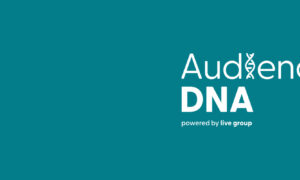People are wonderful, aren’t they? We’re all a complex mesh of unique and diverse minds with different personalities, backgrounds, and experiences, surrounded by modern technology which shapes personalised worlds around our specific interests, desires, and beliefs.
Today’s audiences demand more than just a passive viewing experience – they want to be part of the action, to feel connected to the event and to each other. They want to be inspired, entertained, and educated in ways that are relevant to their lives.
Events are no different. At every event, no matter how big or small, the audience will be made up of a sea of individuals, each with their own preferred way of interacting, learning, and networking. There’s no denying it can be difficult to achieve a personalised experience for delegates, but gone are the days of a one-size-fits-all approach to event planning.
Our clients come to us because we’re experts in audience engagement and, even when a truly personalised approach isn’t possible, there are some shortcuts every Event Manager can have up his or her sleeve.
Shortcuts every Event Manager can keep up his or her sleeve
Here are five top tips you could try building into the planning stages of your next event to help involve, excite and, ultimately, engage your audience.
1. Use the Hawthorne effect
The Hawthorne effect is a phenomenon that refers to the tendency of people to modify their behaviour or performance when they know they are being observed or studied.
The study, named after the Hawthorne Works factory in Illinois, primarily relates to worker productivity, but the implications for audience engagement are just as prescient.
If you want your audience to be more engaged during an event, tell them they’re being observed, that you’re collecting the data in real-time, and that you’ll be using it for the future. Just the act of knowing will change their behaviours and elevate their levels of attention.
2. Provide tighter restrictions for your speakers
It’s easy for events to become monotonous if every speaker uses the same format.
To keep your audience engaged, push your speakers to mix it up. Forcing speakers to adapt to different restrictions can be a great way to improve the quality of their content.
Whether it’s limiting their speaking time to just 10 minutes, requiring them to use timed polling intervals, or adding other constraints, such limitations will usually force speakers to think more creatively, be more concise, and deliver more impactful messages. With this approach, speakers are challenged to distil their ideas into a clear and concise format that is both engaging and informative. The result is often more dynamic and engaging presentations that are better suited to an audience’s needs.
3. Focus on the bookends of your event
Research shows that people remember the start and end of an event far more than anything else, so most of your attention should be on these critical moments.
It’s a cognitive bias that exists in nearly every piece of media. Think about the last book you read that was spoiled by a bad ending, or the universal panning that Game of Thrones received after several award-winning seasons.
Your opening should be attention-grabbing, setting the tone for the rest of the event. Your closing should be memorable and leave the audience with something to remember, echoing the core takeaways. People’s memories are malleable too – posting a positive post-event video can shift people’s minds to think only about the positive experience they’ve had, over and above anything else.
4. Stay away from the typical
People remember unusual things and anything that breaks the monotony of a typical experience can instantly grab an audience’s attention.
When starting your event planning, ensure you include moments people cannot find anywhere else.
If you’re going to be doing something typical, use it sparingly – for example, only allowing one speech. By breaking from the norm, you’ll be more likely to capture your audience’s attention and keep them engaged
5. Use systems to make your event planning easier
At Live Group, we use Audience DNA to understand audiences and build content around them.
Using our own audience profiling tool helps us tailor event formats, content and delivery to the interests and needs of a particular audience, ensuring they stay engaged throughout.
It’s an approach that enables us to make hyper-focused recommendations to help our clients shape increasingly meaningful experiences for their audiences. Try Audience DNA for yourself and see what type of event environment we’d recommend for you.





